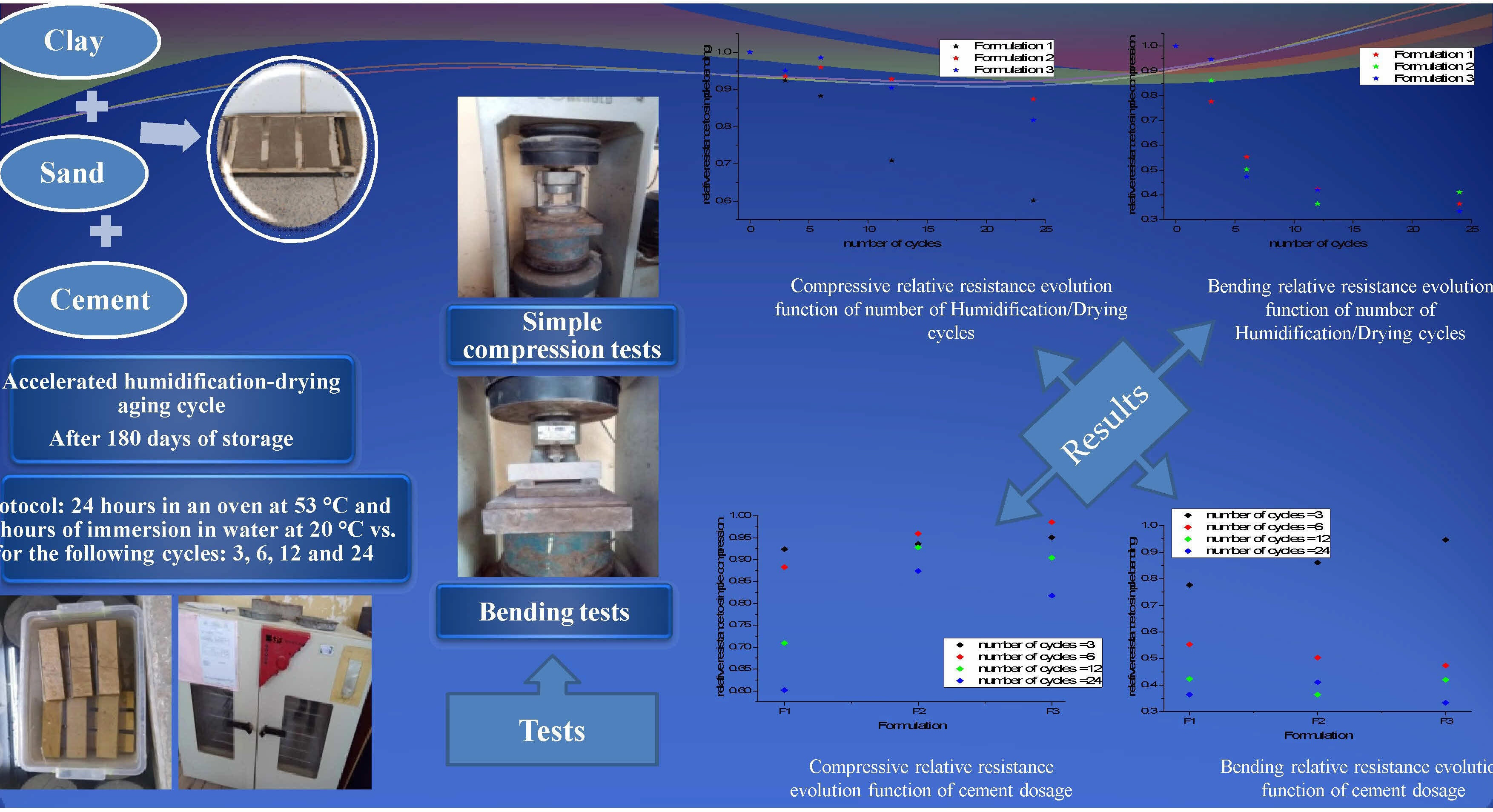Environment effect on mechanical parameters of soil-mixing
DOI:
https://doi.org/10.15587/2706-5448.2024.298972Keywords:
soil-mixing, formulation, mechanical properties, durability, damage, aging cycle, compressive resistance, bending resistanceAbstract
Soil improvement is originally an economical solution to make soil buildable, particularly compared to deep foundation methods using piles. The object of this research is the understanding of the behavior of soil-mixing material, in particular, what concerns the effect of environmental parameters, whether: temperature, water table level, chemical attacks, the phenomenon of aging etc. on the mechanical and physical characteristics (resistance to simple compression, resistance to simple bending, modulus of elasticity, porosity, density, etc.), of a soil-mixing column, in the short term and long term. The big problem is how to carry out experiments in the laboratory, which will be representative of the different phenomena that take place on a real scale (on site). To do this, our approach consists of studying different soil-mixing mixtures composed of «artificial» soils (clay and sand) and a CEM III/C cement, and with a variable W/C ratio. After making the test pieces, with the different dosages of cements and a ratio between clay and fixed sand, they were kept under normal temperature conditions, in order to reach a maturation age (180 days), to be able to begin the series of experiments. Once the specimens were subjected to the aging test, let’s begin to crush them with simple compression and simple bending. The parametric study highlights a percentage of clay beyond of which the resistance decreases and the rigidity of the material can pose a problem for certain structural uses. The different results obtained show that for a low cement dosage, the humidification-drying cycle influences both the resistance to simple compression and to bending simple, as well as the number of cycles affects the resistance values significantly. On the other hand, for a greater or lesser dosage of cement, the resistance values are not affected. Based on the results obtained, it is possible to conclude that the choice of cement dosage depending on the nature of the soil influences the soil-mixing column and plays an important role on the lifespan of the column; therefore, it is necessary to give primary importance to the choice of cement dosage depending on the nature of the soil treated.
References
- Babasaki, R., Terashi, M., Suzuki, T., Maekawa, A., Kawamura, M., Fukazawa, E. (1996). Japanese Geotechnical Society Technical Committee Reports: Factors influencing the strength of improved soil. Proceedings of the 2nd International Conference on Ground Improvement Geosystems, 2, 913–918.
- Porbaha, A. (1998). State of the art in deep mixing technology: part I. Basic concepts and overview. Proceedings of the Institution of Civil Engineers – Ground Improvement, 2 (2), 81–92. doi: https://doi.org/10.1680/gi.1998.020204
- Porbaha, A., Shibuya, S., Kishida, T. (2000). State of the art in deep mixing technology. Part III: geomaterial characterization. Proceedings of the Institution of Civil Engineers – Ground Improvement, 4 (3), 91–110. doi: https://doi.org/10.1680/grim.2000.4.3.91
- Bruce, D. A., Bruce, M. E. C., DiMillio, A. F. (2017). Dry Mix Methods. Dry Mix Methods for Deep Soil Stabilization, 15–26. doi: https://doi.org/10.1201/9781315141466-2
- Topolnicki, M. (2004). In situ soil mixing. (2004). Ground Improvement. Spon Press, 339–436. doi: https://doi.org/10.1201/9780203489611-15
- Kitazume, M., Terashi, M. (2013). The Deep Mixing Method. CRC Press. doi: https://doi.org/10.1201/b13873
- Le Kouby, A., Duc, M., Szymkiewicz, F., Shen, S. (2016). Impact of soil type, cement content, water content on mechanical and porosity properties on cement treated materials. IFSTTAR.
- Semde, I. (2012). Etude d'impact environnemental et social du projet de construction de laboratoire de biosecurite. Available at: https://www.academia.edu/48188451/Etude_dimpact_environnemental_et_social_du_projet_de_construction_de_laboratoire_de_biosecurite
- Guimond-Barrett, A. (2013). Influence of mixing and curing conditions on the characteristics and durability of soils stabilised by deep mixing. Université du Havre. Available at: https://hal.science/tel-02497429
- Helson, O. (2017). Comportement thermo-hydro-mécanique et durabilité des bétons de sol: influence des paramètres de formulation et conditions d'exposition. Available at: https://theses.hal.science/tel-01566852/
- Purohit, P., Höglund-Isaksson, L., Dulac, J., Shah, N., Wei, M., Rafaj, P., Schöpp, W. (2020). Electricity savings and greenhouse gas emission reductions from global phase-down of hydrofluorocarbons. Atmospheric Chemistry and Physics, 20 (19), 11305–11327. doi: https://doi.org/10.5194/acp-20-11305-2020

Downloads
Published
How to Cite
Issue
Section
License
Copyright (c) 2024 Menari Farouk, Sabah Moussaoui, Mourad Belgasmia, Khelifa Abbeche

This work is licensed under a Creative Commons Attribution 4.0 International License.
The consolidation and conditions for the transfer of copyright (identification of authorship) is carried out in the License Agreement. In particular, the authors reserve the right to the authorship of their manuscript and transfer the first publication of this work to the journal under the terms of the Creative Commons CC BY license. At the same time, they have the right to conclude on their own additional agreements concerning the non-exclusive distribution of the work in the form in which it was published by this journal, but provided that the link to the first publication of the article in this journal is preserved.







